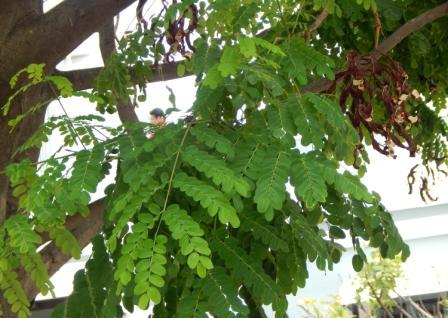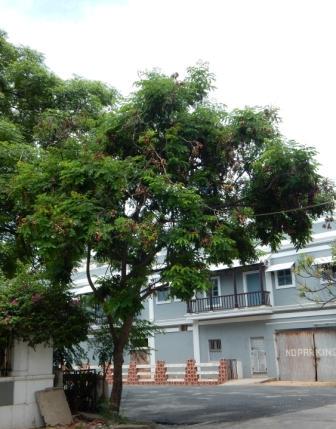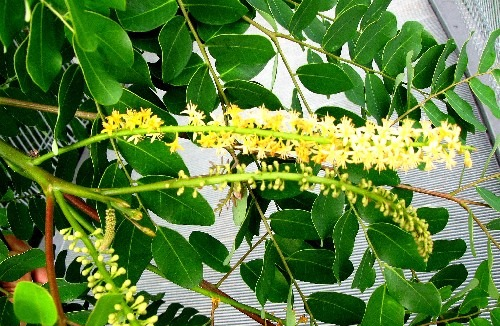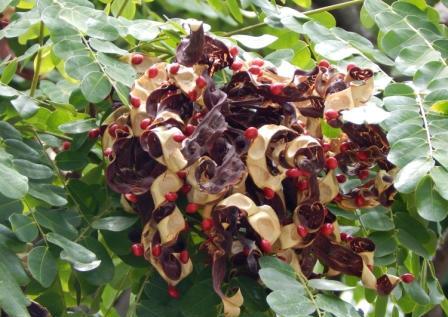Natural Regeneration :
Propagates naturally by seeds under favorable conditions.
Artificial Regeneration :
- Propagated by direct sowing and Nursery raised seedlings.
Seed collection and Storage :
- Seed collection in the month of December - February.
- Germination percentage 75%.
- Number of seeds 3,750 /kg
- Seed viability 24 months.
Seed Treatment :
- Hot water treatment for 24 hours.
Nursery Technique :
- Seeds are sown vertically at a depth of 1 to 1. 3 cm in polythene bags.
- Polybags are kept under light shade and watering is done as and when required.
- The germination commences in 7 days and continues up to four weeks
- The seedlings become ready for plantation in 6 months.
Plantation technique :
- The pit size of 30 cm3 is adopted.
- Trees planted 1 x 2 meters apart for windbreaks and at 2 x 2 meters in plantations.
- For shade trees, spacing varies from 5 to 10 meters, depending on the companion crop and site.
Care & Disease Control :
- Plantation site should be free from weed and periodical pruning
Irrigation :
- For proper growth and survival it is necessary to give one or two waterings after planting. This is specifically required in arid regions.
- Irrigation after planting is not a prerequisite in areas having sufficient soil moisture and precipitation.
- Higher survival rate and better rate of growth is reported when soil and water conservation measures are also adopted.
Recommended Harvest :
Agro Forestory :
- It is compatible with most tropical field and tree crops, making it suitable to use in integrated production systems.
- It is interplanted among field and tree crops such as spices, coffee and coconuts.
Major uses :
Agroforestry Uses:
- The tree is a natural pioneer.
- With its fast rate of growth and ability to fix atmospheric nitrogen, it can be used for land reclamation and to re-establish woodland.
- The spreading crown of light, feathery foliage offers attractive shade and the tree is often planted for shade in coffee, clove and rubber plantations.
- It is also planted along field borders as part of a windbreak.
- The small leaves break down easily, making the species a good green manure.
- It is compatible with most tropical field and tree crops, making it suitable to use in integrated production systems.
- It is inter-planted among field and tree crops such as spices, coffee and coconuts.
- It is often grown as a shade tree for coffee and nutmeg .
Market details :
- Approximately Rs.1500 to 2000/ton*
*Subject to change according to market demands





